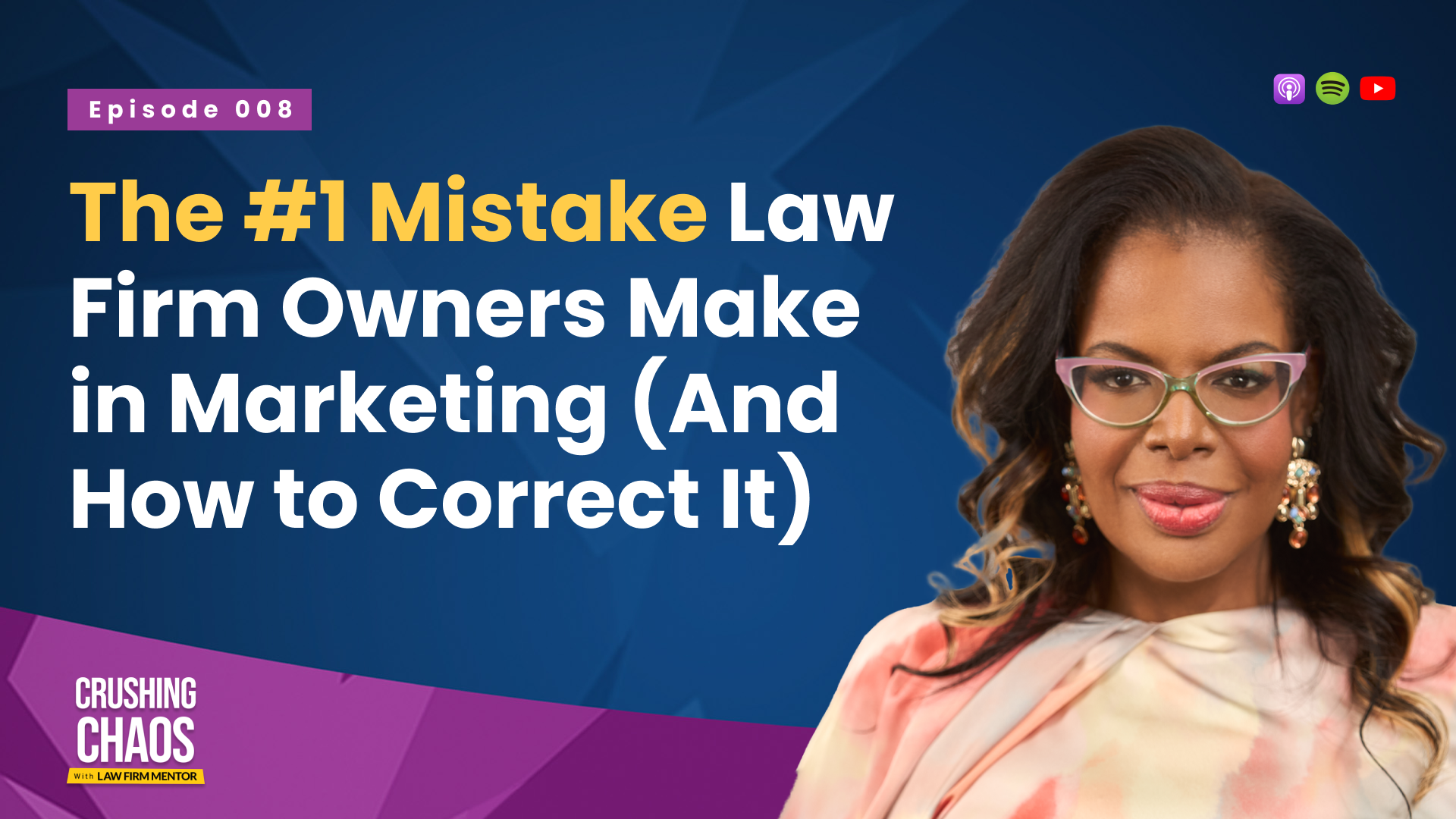Many law firm owners make marketing decisions based on what feels right—choosing colors, images, or ad copy because they like them. But preference-based marketing rarely leads to consistent growth. The truth is, great marketing isn’t about what you like; it’s about what works for your audience.
In this episode of Crushing Chaos with Law Firm Mentor, Allison Williams reveals the #1 mistake law firm owners make in marketing: relying on personal opinion instead of data. She explains how A/B testing—a proven, data-driven method—can help firms identify what actually works and what doesn’t. With the right testing approach, your firm can stop guessing and start scaling.
Why Data Matters More Than Your Opinion
Every successful law firm owner must think like a CEO, not just a lawyer. That means using evidence, not instinct, to make marketing decisions. When you rely on personal taste, you end up with inconsistent results and wasted ad spend. But when you test, track, and measure, you can see exactly which version of an ad, landing page, or website design converts better.
As Allison explains, one client started at $175,000 in revenue and grew to nearly $1 million in just two years. Her secret? She stopped asking others which graphics they liked and started using A/B testing to determine what performed best.
Data doesn’t lie—and that’s what makes it the foundation of every successful marketing strategy.
What Is A/B Testing (and Why You Need It)
A/B testing simply means comparing two versions of something to see which performs better. For example, you might run two Facebook ads that are identical except for one element—say, the color of the background or the call-to-action text. By tracking which version generates more clicks or conversions, you get real insight into what your audience responds to.
It sounds simple, but this method can dramatically change the way you make marketing decisions. Instead of asking, “Which ad looks better?” you start asking, “Which ad brings in more clients?”
This shift from preference to performance is what separates hobbyists from CEOs.
Rule #1: Always Start with a Hypothesis
Testing without direction leads to confusion. Before running a test, you need a clear hypothesis—an educated guess about what might work better. For instance: “If we change the background color of our ad from blue to green, we’ll increase conversions by 10%.”
Starting with a hypothesis not only guides your test but also helps you develop stronger marketing instincts over time. You begin to recognize patterns in what resonates with your target audience and what doesn’t.
As Allison notes, even the most intuitive business owners must train their gut instincts through evidence. Over time, data reinforces your intuition, giving you both confidence and clarity in decision-making.
Rule #2: Test One Variable at a Time
The fastest way to ruin a test is by changing too many things at once. When you do that, you can’t tell what caused the difference in results. Was it the color, the font, or the call to action? You’ll never know.
That’s why it’s critical to test just one variable at a time. If you change the background color from blue to yellow, keep everything else—text, layout, message—exactly the same. This lets you isolate the cause of success and build from there.
This discipline not only saves money but ensures every improvement you make is intentional and replicable.
Rule #3: Repeat Your Tests Periodically
Marketing isn’t a one-and-done project. What works today may not work six months from now. Consumer behavior changes, algorithms shift, and competition evolves. That’s why Allison emphasizes the importance of retesting.
Even if your ad or website performs well, revisit it regularly to look for small ways to optimize—a headline tweak here, a layout change there. Those small refinements can translate to huge gains in revenue and conversion rates.
At scale, top-performing companies don’t wait until something breaks to fix it—they improve what already works to make it even better.
From Guesswork to Growth: Becoming a Data-Driven Law Firm
Testing for success isn’t just a marketing tactic—it’s a mindset. When you commit to making decisions based on data, you free yourself from second-guessing. You gain the ability to scale strategically, optimize continuously, and build a brand that resonates with your ideal clients.
As Allison reminds listeners, every decision should be guided by measurable results. A/B testing turns chaos into clarity—and that clarity is the foundation of a thriving law firm.
Ready to Test for Success?
If you’re tired of guessing and want proven strategies that help you attract the right clients, this episode is a must-listen.
Watch or listen now:
Want help implementing data-driven marketing strategies that actually work? Book a discovery call with Law Firm Mentor today and start testing your way to success.

